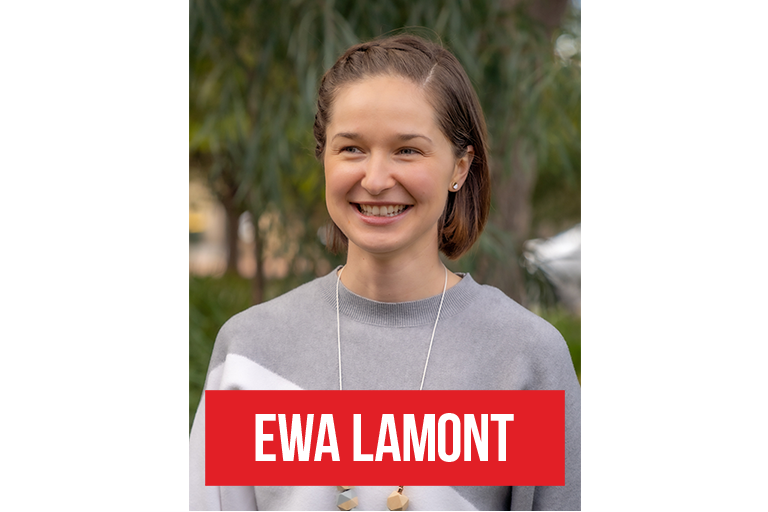Purple Orange is a social profit organisation on a mission to “create a world where people with disability get a fair go at what life has to offer”.
Author David Grant coined the term social profit organisation in The Social Profit Handbook. Essentially, it means an organisation that works towards the well-being of society, directly helping individuals for the good of their communities.
For the team at Purple Orange, delivering that community-focused well-being to young Australian students is achieved through two unique school programs that aim to bring allyship, inclusivity, and advocacy skills to classrooms.
The road to employment
To help empower people with disabilities to take control of their lives and actively contribute to the wider community, project leader Ewa Lamont is tackling the issue of inclusivity at the root – by educating teachers and students on inclusive practices.
“Road to Employment is a program that looks at the employment journey of a person with disability right from the very start,” Ms Lamont told The Bursar. “For most people, this begins at the end of high school, but the average employment journey for somebody living with disability starts right from the time that they’re born. It’s about managing the expectations of parents, teachers and other people in their lives as to what they’re going to be able to achieve in the future.”

The stats on students with disability
The Australian Institute of Health and Welfare (AIHW) HILDA Survey collects information on 17 disability types, which are combined into six disability groups: sensory, intellectual, physical, psychosocial, brain damage, and other long-term restrictive conditions.
Most (89 per cent or 338,000) Australian school students with disability attend mainstream schools. 71 per cent (or 269,000) attend regular classes in mainstream schools. 18 per cent (or 67,000) attend specialist classes within a mainstream school, where they may or may not receive additional assistance. The rest (12 per cent or 45,000) attend specialist schools.
“We do workshops with parents from as early as pre-school to talk about the importance of planning for inclusive education and what they think their child is going to do in the future in terms of going to a segregated school and then segregated employment and a segregated life, or going to a mainstream school, receiving a mainstream education, finding mainstream jobs, and living a mainstream life,” says Ms Lamont.
“So that’s the concept behind this and it’s why I’m so interested in raising the bar, especially when we look at employers.”
Raising The Bar
Raising The Bar sits within the Road to Employment program.
“We’re talking to parents about raising their own expectations of what their child is capable of. We’re raising the bar by raising the expectations of what people expect that people living with a disability will do in the future.”
Raising the Bar workshops focus on teaching inclusive education and allyship to parents with pre-school children, and Year five and six students, their parents and teachers.
“The workshops teach universal design and skills for making the work teachers set for a class inclusive from the start. Rather than setting up a task and then working out how to modify it for one or two students who are ‘the odd ones out’, we get everybody working on the same task and give every student the same opportunity. These little changes can really impact students’ ability to be included in the classroom.”
Ms Lamont believes the allyship workshops are an integral part of a bigger conversation about inclusivity.
“Our workshops teach Year five and six students how to be an ally for people living with disability. Too often you have children that go through the schooling system without ever being exposed to people who live with disability, because they’re segregated. So, when they go out into the working world, would they hire a person with disability if they’ve never gone to school with a person with disability?”
Invisible disabilities
Almost all of the AIHW disability categories include invisible disabilities and Ms Lamont believes it’s the education piece that has had the most impact within both programs.
Read more: Why physical activity is so important for children with disabilities
“When we ask students how they’ll make a change as a result of the workshop they typically say they’re already modelling what we’re showing them, the feedback we get the most is actually that students didn’t know that there invisible disabilities existed.
At that age they’re still thinking disability means a wheelchair, so it’s critical that we have facilitators presenting who live with both visible and invisible disabilities themselves, and that they’re the ones actually going out and talking to students about the invisible disabilities that maybe all around them at school, without them realising.”
Ms Lamont believes that by teaching students early on that a person with disability is just another human, with potentially the same interests and disinterests as them, can make a meaningful – and sustainable – difference.
“We hope that when they get out into the working world, they’re more accepting and it’s more natural for them to be inclusive in the workplace and in life too.”






